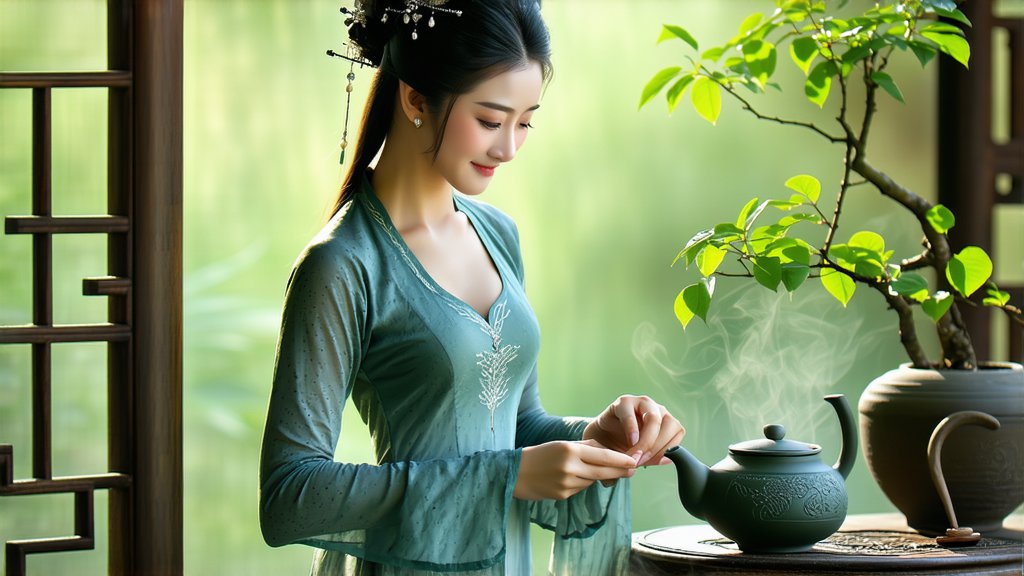
The world of tea is vast and diverse, with each variety offering its unique flavors, aromas, and histories. Among the myriad of teas that China has to offer, one stands out for its distinctive taste and rich cultural heritage - Tieguanyin Oolong tea. In this article, we will delve into the fascinating world of Tieguanyin, exploring its history, types, production process, brewing techniques, and the art of tasting it like a true connoisseur.
A Glimpse into History
Tieguanyin, also known as Iron Goddess of Mercy, traces its origins back to the early 18th century in the Anxi region of Fujian Province, China. Legend has it that a poor farmer discovered this tea by chance when he noticed his tea plants had been damaged by a prickly bush. To salvage what he could, he decided to process the leaves using traditional oolong tea methods, resulting in a tea of exceptional quality. The story goes that the farmer named the tea "Iron Goddess" in honor of a dream he had about Guanyin, the Buddhist goddess of mercy.
Varieties of Tieguanyin
While Tieguanyin is primarily associated with the Anxi region, there are several sub-varieties within this category. Some of the most renowned ones include:
- Anxi Tieguanyin: The original and most famous variety, hailing from the Anxi region. It features a complex flavor profile with floral and fruity notes.
- Gao Shan (High Mountain) Tieguanyin: Grown at higher altitudes, these teas are known for their more pronounced and delicate flavors.
- Rou Gui (Fat Osmanthus) Tieguanyin: This variant is scented with osmanthus flowers, adding a sweet and fragrant aroma to the tea.
- Da Hong Pao (Big Red Robe): Although technically not a Tieguanyin, it shares similarities in taste and preparation methods. Da Hong Pao is considered one of the finest and most expensive oolong teas in the world.
The Art of Production
The production of Tieguanyin Oolong tea is a meticulous process that involves several stages:
- Plucking: Only the tenderest buds and leaves are hand-picked, usually in the spring or early summer when the quality is at its peak.
- Withering: The freshly picked leaves are spread out to wilt under the sun or in a controlled environment, reducing moisture content and preparing them for rolling.
- Rolling: The leaves are gently rolled to break down cell walls, facilitating oxidation and releasing aromatic compounds.
- Oxidation: This stage allows the leaves to partially ferment, giving Tieguanyin its characteristic flavor and color. The degree of oxidation can vary depending on the desired outcome.
- Shaking: After initial oxidation, the leaves are shaken vigorously to further enhance the flavor and aroma.
- Fixation: The leaves are then quickly heated to stop the oxidation process, locking in the flavors.
- Rolling and Drying: The leaves undergo multiple rounds of rolling and drying to achieve the final shape and moisture content.
Brewing Techniques
To fully appreciate the nuances of Tieguanyin Oolong tea, proper brewing techniques are essential:
- Water Temperature: Use water heated to around 190-200°F (88-93°C). Too hot or too cold water can affect the extraction of flavors.
- Tea Quantity: Typically, 5 grams of tea per 100 ml of water is recommended. Adjust according to personal preference.
- Steeping Time: The first infusion should be relatively short, around 15-30 seconds, followed by longer steeps for subsequent infusions. Each steep will reveal different layers of flavor.
- Gongfu Style Brewing: For a more immersive experience, consider using the Gongfu style, which involves multiple short infusions with small amounts of tea and water. This method allows you to savor the evolving flavors throughout the session.
Savoring the Moment
Tasting Tieguanyin Oolong tea is an art form in itself. Here are some tips to enhance your sensory experience:
- Appearance: Observe the tightly rolled leaves unfurling in the water, revealing their vibrant green hues with occasional hints of red or brown.
- Aroma: Before sipping, take a moment to inhale the fragrant aroma. Tieguanyin often exhibits floral, fruity, or even buttery notes.
- Flavor: As you sip, let the tea coat your palate and notice the interplay of flavors - from sweet and floral to earthy and mineral. Each sip should be a journey through the complexities of the tea.
- Mouthfeel: Pay attention to the texture of the tea in your mouth. High-quality Tieguanyin should have a smooth, almost creamy mouthfeel without any astringency or bitterness.
- Aftertaste: Savor the long-lasting aftertaste, which should linger pleasantly on your tongue and throat, inviting another sip.
In conclusion, Tieguanyin Oolong tea is not just a beverage; it's a celebration of Chinese tea culture and craftsmanship. From its humble beginnings to becoming a revered tea among connoisseurs worldwide, Tieguanyin continues to captivate with its elegance and depth. Whether enjoyed in solitude or shared among friends, a cup of Tieguanyin offers a momentary escape into a world of tranquility and refined pleasure. So, next time you find yourself reaching for a cup of tea, why not embark on this enchanting journey with Tieguanyin Oolong?